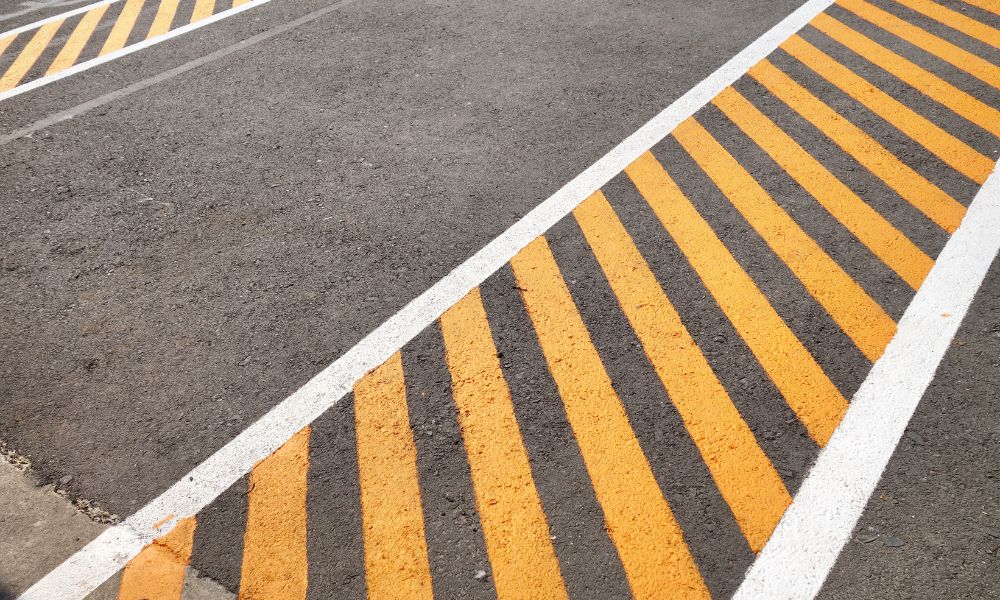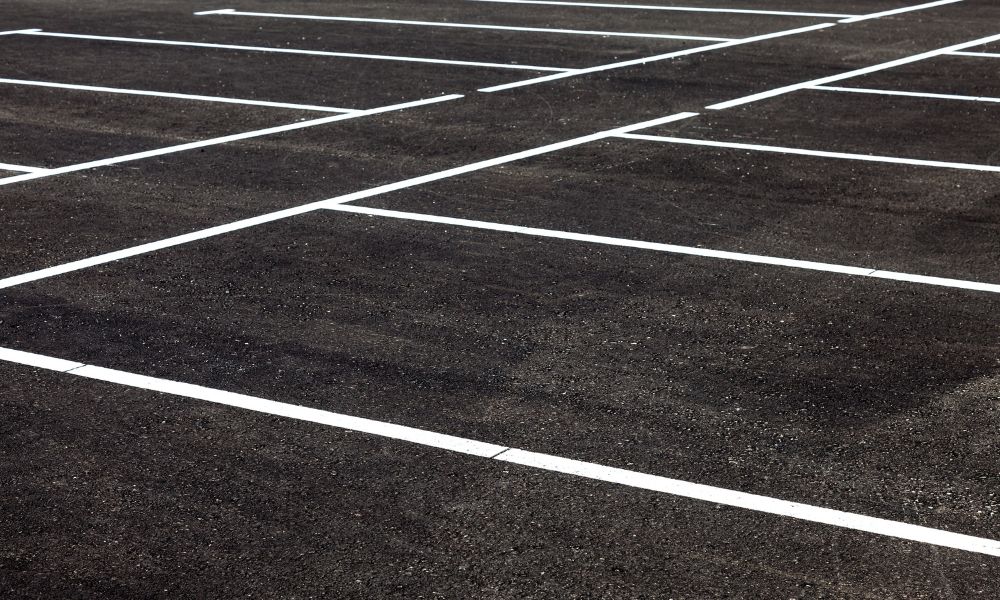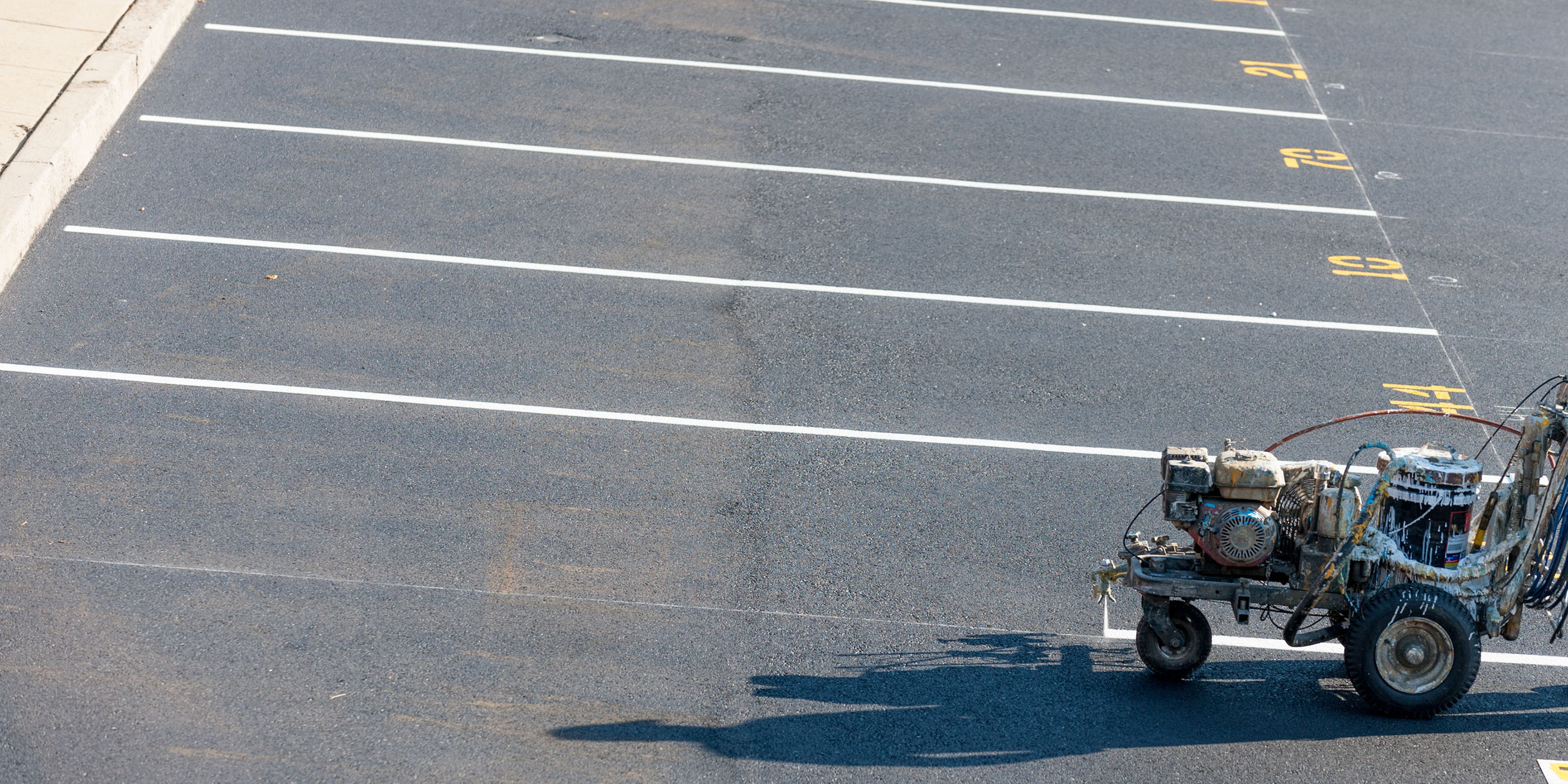A Comprehensive Guide to the Ideal Practices in Road Painting for Public Highways
Reliable road paint is a vital part in making sure public safety and optimum traffic circulation on freeways. This discussion will certainly check out the finest techniques in this field, consisting of the option of suitable products and progressed application techniques. It is vital to consider not only the prompt influence of roadway markings however additionally their long-term maintenance and exposure under differing ecological conditions. Understanding these aspects can significantly influence the efficiency of road markings, yet several are uninformed of the subtleties entailed. As we consider these best practices, the implications for accident decrease and general road use will end up being obvious.
Importance of Road Paint
Road painting plays an important function in preserving traffic security and effectiveness, with research studies suggesting that well-marked streets can decrease accidents by approximately 30%. The clear distinction of lanes, pedestrian crossings, and various other crucial markings offers to direct motorists and pedestrians, cultivating a predictable environment on the road. This predictability is essential for effective navigation and helps decrease complication, which can typically lead to crashes.
Furthermore, road markings contribute in sharing crucial information, such as rate limits and directional assistance. They boost exposure, especially in damaging weather condition conditions or during nighttime driving. The presence of reflective products in road paints additionally improves presence, allowing drivers to determine crucial markings that affect their habits when driving.

Picking the Right Materials
Picking proper materials for roadway paint is vital to achieving reliable and resilient markings. The option of materials directly affects the visibility, longevity, and safety of roadway markings. Usual alternatives include water-based paints, solvent-based paints, and polycarbonate materials, each with unique buildings and applications.
Water-based paints are eco-friendly, quick-drying, and appropriate for most weather condition problems, making them perfect for metropolitan setups. However, they might call for more regular upkeep because of deterioration. Solvent-based paints, while using superb adhesion and toughness, can pose ecological and health issues because of unpredictable organic substances (VOCs)
Polycarbonate materials are significantly popular due to their durability and resilient efficiency. These products are warmed before application, permitting a strong bond with the pavement. Their reflective residential properties enhance exposure, particularly at evening.
When selecting products, aspects such as website traffic quantity, climate conditions, and the specific type of roadway should be considered. Conducting complete study and consulting with producers can aid make certain that the picked materials meet local regulations and standards, inevitably adding to safer streets and enhanced chauffeur awareness.
Reliable Application Strategies
Reliable application strategies play a vital role in making certain that road markings attain ideal efficiency and durability. This strategy reduces overspray and ensures that the paint is applied evenly, which is crucial for keeping road security.
Prior to application, it is crucial to prepare the surface area effectively. This consists of cleaning up the roadway of debris, oil, and wetness to boost attachment. Additionally, temperature level and moisture should be thought about throughout the application process to achieve the very best outcomes.
Making use of the suitable devices is additionally essential. Line stripers outfitted with adjustable widths enable accurate markings that adapt governing requirements. Moreover, it is vital to adjust the tools on a regular basis to ensure consistency in paint thickness.
Timing and Ecological Aspects
Appropriate timing and factor to consider of environmental factors are necessary for the effective application of road markings. The effectiveness of road paint greatly relies on temperature, wind, and moisture problems at the time of application. Ideally, temperatures should be between 50 ° F and 85 ° F(10 ° C to 29 ° redirected here C) for optimal attachment and treating. When temperatures are too reduced, paint might not treat effectively, causing premature wear and reduced presence.
Humidity degrees likewise play a crucial duty; high moisture can hinder drying out times, while exceedingly completely dry conditions may create fast evaporation of solvents, influencing the paint's performance. Wind can present contaminants and particles, potentially jeopardizing the high quality of the markings. For that reason, it is advisable to select tranquil days for application.

Scheduling paint jobs during positive weather problems can significantly improve the long life and efficiency of roadway markings - Parking lot line striping. By thoroughly reviewing these elements, companies can ensure that road markings are used efficiently and preserve their presence and resilience over time.
Upkeep and Long Life Techniques

One efficient method is to execute an organized repainting program based upon traffic volume and ecological elements - Line painting company. Higher web traffic locations may need even more frequent maintenance to neutralize the abrasive impacts of lorries and climate condition. Additionally, making use of durable materials, such as polycarbonate and epoxy paints, can significantly expand the life expectancy of roadway markings
Cleansing road surfaces to eliminate particles and contaminants is an additional important element of upkeep. This ensures optimal bond of brand-new paint and boosts the general performance of the markings. Furthermore, utilizing sophisticated modern technologies, such as automated radar, can improve the surveillance procedure and optimize maintenance schedules.
Incorporating these methods will certainly not just enhance the exposure and security of roadway markings however likewise decrease lasting costs connected with frequent repainting and repairs. (Pavement marking)
Verdict
View Line painting Abbotsford in a full screen map
The selection of ideal materials, integrated with effective application strategies and consideration of environmental variables, contributes to the longevity and exposure of roadway markings. Regular upkeep and evaluations further prolong the lifespan of these markings, eventually lowering mishaps and boosting overall road functionality.
The presence of reflective products in road paints even more boosts exposure, permitting drivers to discern vital markings that affect their behavior browse around this site on the road.
Choosing suitable products for road painting is crucial to achieving efficient and sturdy markings.While the initial application of road markings is critical, ongoing maintenance methods are equally crucial to guarantee their long life and visibility. Additionally, the use of long lasting products, such as thermoplastic and epoxy paints, can dramatically expand the lifespan of road markings.
The selection of suitable materials, integrated with reliable application techniques and consideration of environmental elements, contributes to the sturdiness and exposure of roadway markings.